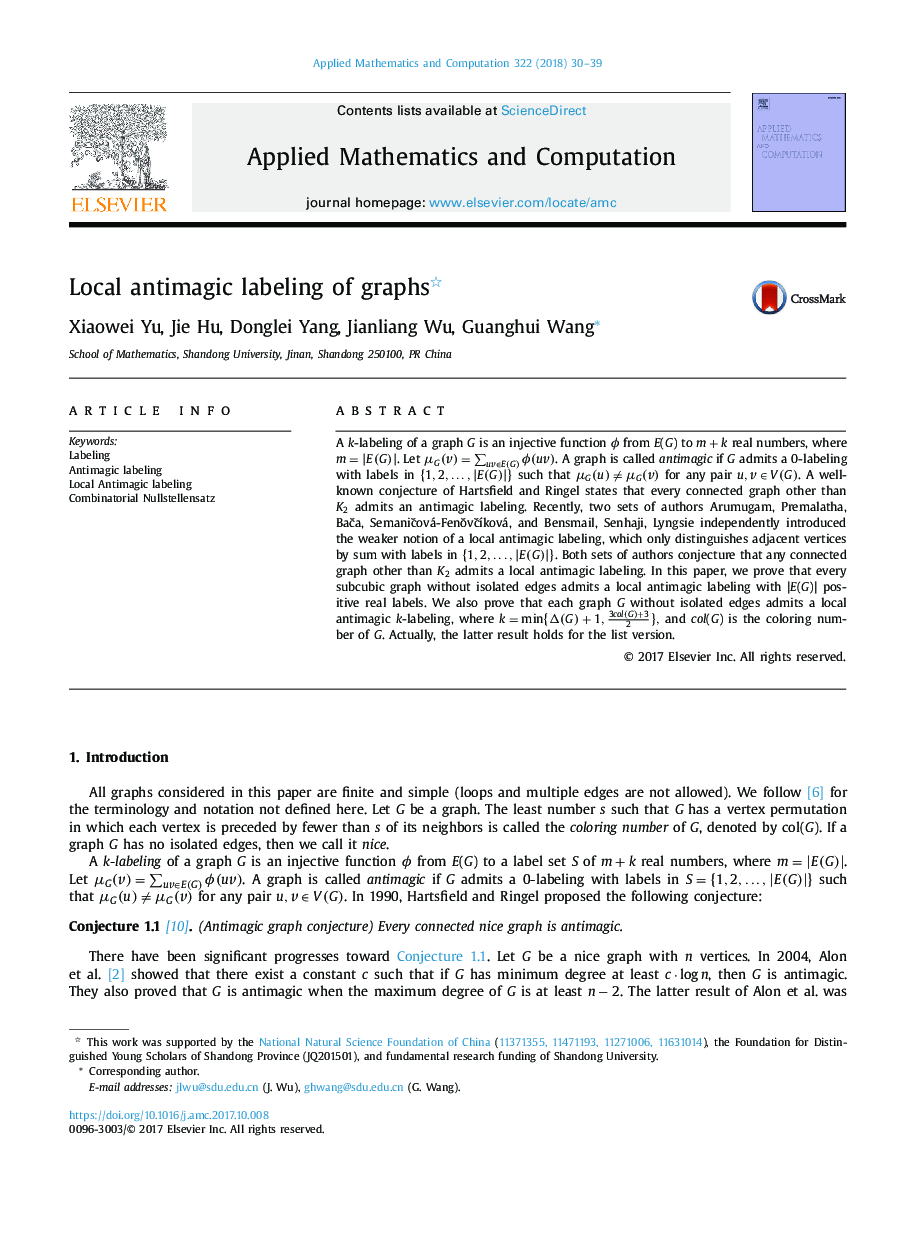| Article ID | Journal | Published Year | Pages | File Type |
|---|---|---|---|---|
| 8901268 | Applied Mathematics and Computation | 2018 | 10 Pages |
Abstract
A k-labeling of a graph G is an injective function Ï from E(G) to m+k real numbers, where m=|E(G)|. Let μG(v)=âuvâE(G)Ï(uv). A graph is called antimagic if G admits a 0-labeling with labels in {1,2,â¦,|E(G)|} such that μG(u)â¯â â¯Î¼G(v) for any pair u, vâ¯ââ¯V(G). A well-known conjecture of Hartsfield and Ringel states that every connected graph other than K2 admits an antimagic labeling. Recently, two sets of authors Arumugam, Premalatha, BÄca, SemanÄcová-FenÌovÌcÃková, and Bensmail, Senhaji, Lyngsie independently introduced the weaker notion of a local antimagic labeling, which only distinguishes adjacent vertices by sum with labels in {1,2,â¦,|E(G)|}. Both sets of authors conjecture that any connected graph other than K2 admits a local antimagic labeling. In this paper, we prove that every subcubic graph without isolated edges admits a local antimagic labeling with |E(G)| positive real labels. We also prove that each graph G without isolated edges admits a local antimagic k-labeling, where k=min{Î(G)+1,3col(G)+32}, and col(G) is the coloring number of G. Actually, the latter result holds for the list version.
Related Topics
Physical Sciences and Engineering
Mathematics
Applied Mathematics
Authors
Xiaowei Yu, Jie Hu, Donglei Yang, Jianliang Wu, Guanghui Wang,
